POWER TO THE PEOPLE
Gordhan promises that ‘even if the long wires don’t come, electricity will come’ at launch of containerised microgrid project
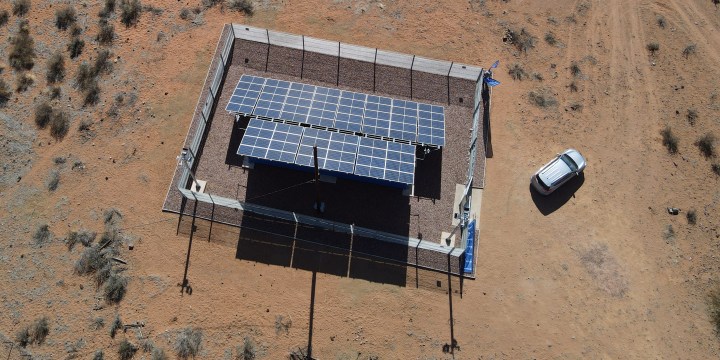
Hailing the launch of a new electrification project in a remote Kalahari hamlet in the Northern Cape on Friday, Public Enterprises Minister Pravin Gordhan outlined his vision of a new energy future where South Africans in even the most remote corners of the country will be able to have access to electricity.
On Friday morning, Eskom marked another milestone in its foray into the world of decentralised energy systems with the launch of a containerised microgrid electrification project in a remote corner of the Northern Cape.
At the end of 62km of tarred road followed by 90km of unforgiving, rocky gravel road, the tiny dorp of Swartkopdam has long been illuminated by candlelight and heated by wood fire. Simply too far – and the topography not conducive – to connect to wires that transmit electricity to the rest of South Africa, Swartkopdam has never had electricity.
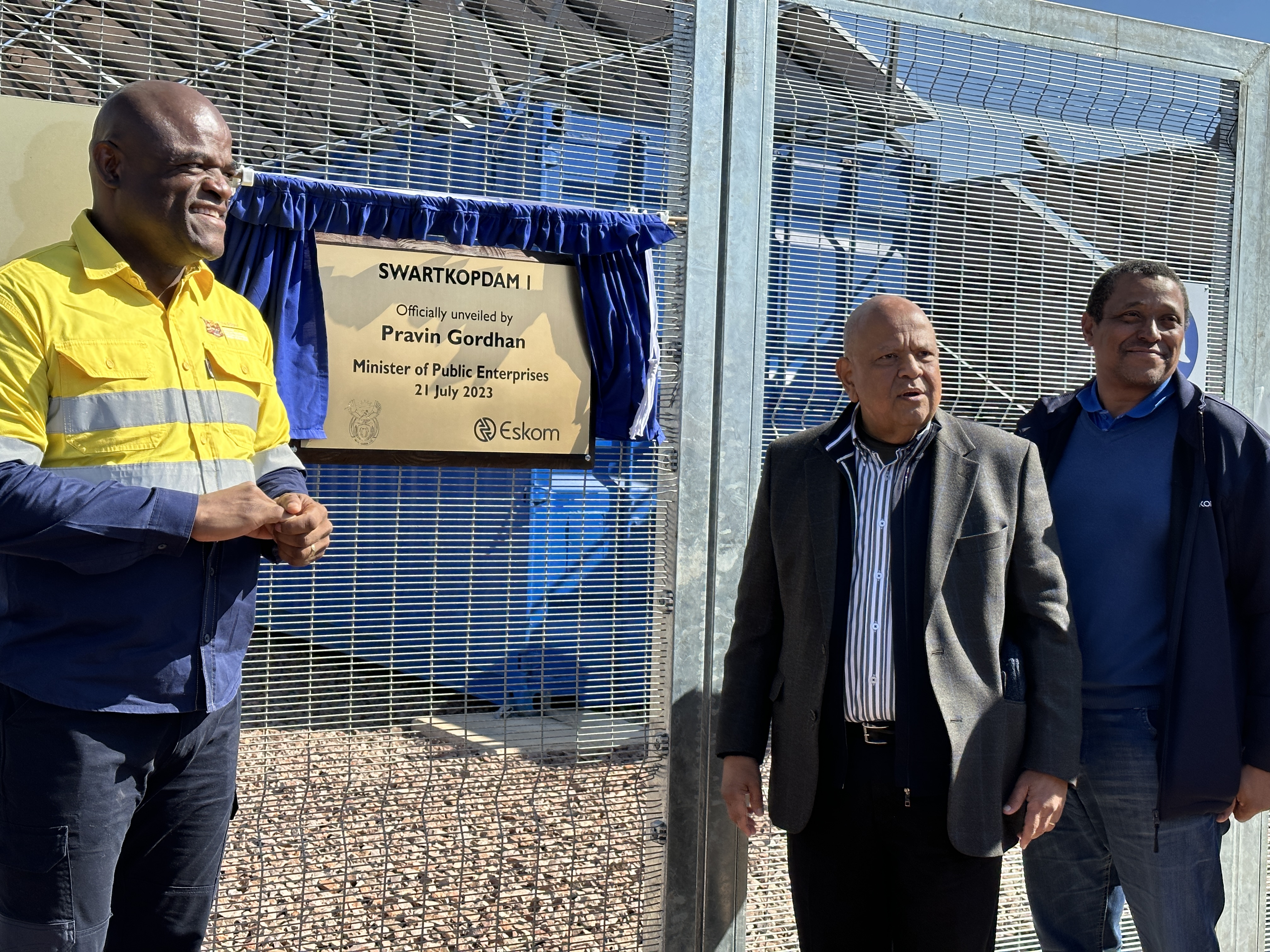
From left: Northern Cape Premier Dr Zamani Saul, Public Enterprises Minister Pravin Gordhan and Eskom group chief executive for distribution Monde Bala unveil the minigrid system in Swartkopdam on 21 July 2023. (Photo: Ethan van Diemen)
That is no longer the case. Since late December 2022, a solar panel array of some 43kW has provided near limitless electricity to the community of roughly 40 homes.
According to the World Bank, 89.3% of South Africa’s population had access to electricity in 2021. This is a significant increase from the 34% in 1994, the year that apartheid ended.
The increase in electrification has been largely attributed to the intervention of the South African government and Eskom and programmes such as the Integrated National Electrification Programme (INEP).
Northern Cape Premier Dr Zamani Saul acknowledged this reality. He mentioned how in the Northern Cape, 95% of homes have electricity. Speaking to the crowd in Afrikaans, Saul said that with this project, they were adding more to this percentage.
Also speaking at the official launch of the project, Public Enterprises Minister Pravin Gordhan shared his congratulations on bringing “the light to this part of South Africa” to the stakeholders present. Gordhan went on to explain that the Northern Cape is going to be “the home of most of the renewable energy investments [in South Africa] in the future.”
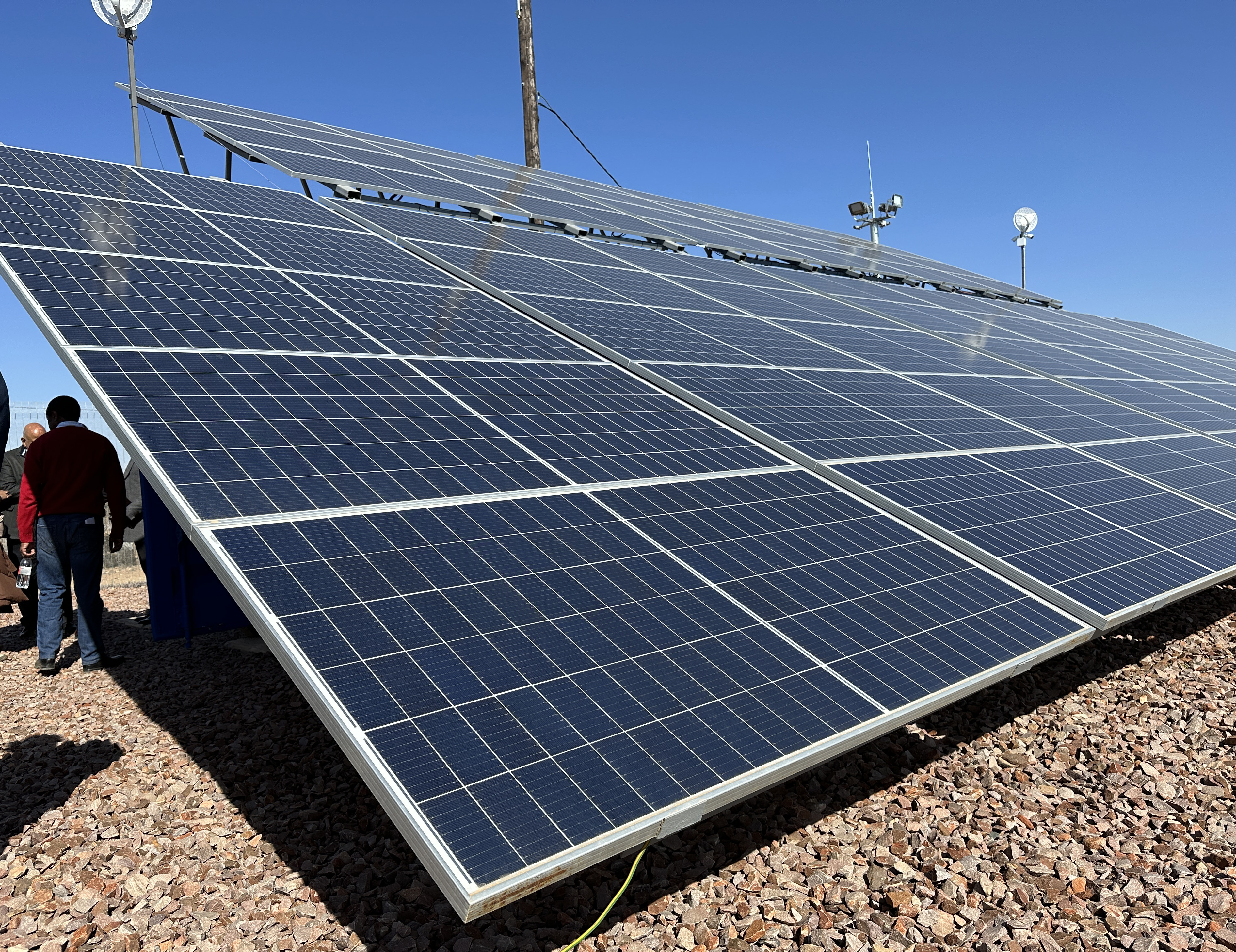
The solar array powering the Swartkopdam community (Photo: Ethan van Diemen)
South Africa is in the midst of what it calls a Just Energy Transition, where the country will shift from a legacy of electricity generation overwhelmingly dominated by pollutive coal-fired power plants in the east of the country to a future where renewable energy contributes a larger share of generation capacity. Much of that infrastructure will be based in the west of South Africa in the Western and Northern Cape with their substantial levels of solar and wind energy potential.
Read more in Daily Maverick: How renewable energy can help uplift small, poor South African towns
In a study conducted by the University of Oxford’s Environmental Change Institute, published in April 2022, South Africa and Egypt were identified as the most favourable African countries for renewable energy development and investments.
Among the findings of the study, based on an analysis of the African continent, was that South Africa “offers favourable conditions for wind installations due to high wind speeds (12m/s at 100m height), high fossil fuel electricity reliance (213-billion kWh), good political stability, and adequate techno-economic factors”. Dr Doorga Jay Rovisham Singh, a lecturer at Université des Mascareignes and lead author of the study, told Daily Maverick that “SA has one of the best solar and wind potentials of the entire African continent”.
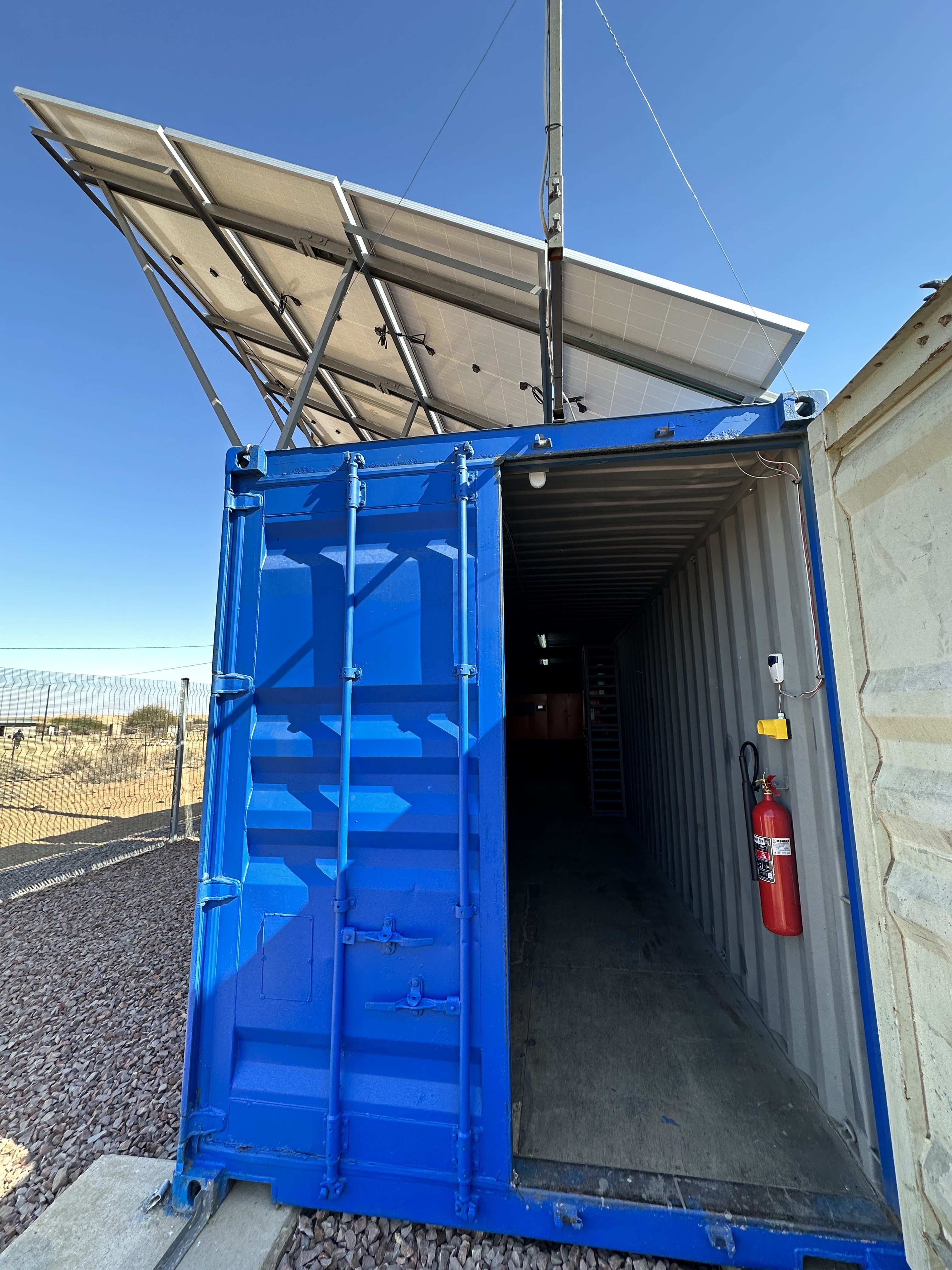
The entire microgrid fits into a standard sized container (Photo: Ethan van Diemen)
The Northern Cape in particular offers favourable conditions for the development of solar energy generation. Nick Singh, Smart Grid Centre of Excellence manager at Eskom’s Research and Development department agreed.
Speaking to Daily Maverick, he explained that Swartkopdam receives an average of 10 hours of sunlight a day, which when combined with the size and modular nature of the microgrid is more than enough to supply the residents of the town with all their electricity needs.
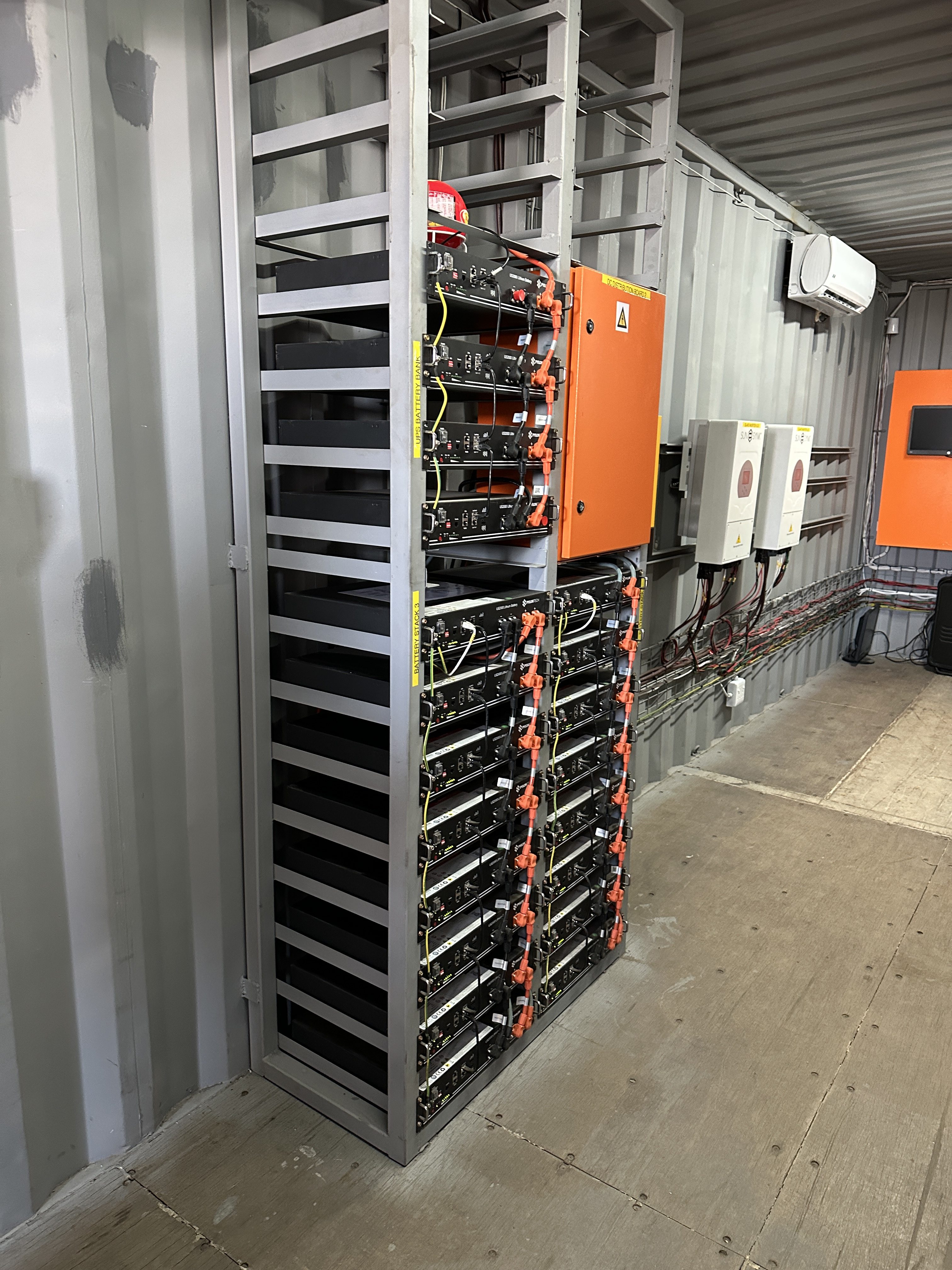
The lithium ion batteries that store the energy to be converted into electricity when needed. (Photo: Ethan van Diemen)
He said that this is a tangible example of how Eskom can provide innovative solutions to deliver electricity generation to far-flung towns either too far from or geographically incapable of being connected to the grid. All with the necessary infrastructure fitting neatly into an ordinary shipping container.
Hammering this point home on Friday, Gordhan said “even if the long wires don’t come, electricity will come”.
According to Eskom group chief executive for distribution, Monde Bala, the utility has identified and budgeted – for this financial year – for at least 100 similar projects to be rolled out across the country. DM


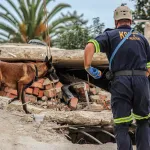




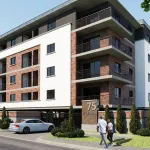









“SA has one of the best solar and wind potentials of the entire African continent”.
Tell that to the idiot Mantashe!
Great good news story. Well done to the team involved.
Pity it’s an “election time” story! And no thanks to the tax payers for funding this project either!
This is exciting news. It brings hope and new opportunities to people who haven’t had this before.
Misleading article. “ 43kW has provided near limitless electricity to the community of roughly 40 homes. “
Solar panels only supply about 30 % of their full capacity averaged over 24 hours because they produce nothing at night and little early in the morning and in the late afternoon.
If you do the sums this means that each of the 40 homes will get about 500 watts. This would be enough to run LED lights and perhaps a small fridge. Certainly not enough for cooking .
Not nearly limitless.
Not exactly. 43kW means each home has a 1000W connection. The 43kW in NCape would produce about 80,000kWh per year into the inverter and battery bank. So 80,000 / 40 homes / 12 months around 167kWh per household per month. That is OK for couple of lights and appliances. A fridge runs around 60W or under 50kWh per month. Compared to no power, a nice change.
Yes, just a fridge and a few lights would make a huge change in the quality of life for people who have done without these.
Our little tabletop induction stove means we have been able to cook with solar. They are inexpensive, every family with or without solar should have one.
Price? Economic model? Sustainability? I can put up 1,000 of these things in my suburb alone. Yet I am denied by law.
My skepticism driven by the presense of politicians. Let’s see what’s left of this in 5 years time, until then I’m writing it off as an expensive PR exercise….
Agreed. I see syndicates stealing the panels very shortly.
Maybe the commemoration plaque is only plastic, not brass, otherwise that will be the first to go, followed by the batteries, inverter, solar panels, security cameras, fence, poles, gravel!
It’s too easy to become utterly skeptical and blinded. I’m happy to give Eskom the credit for this one until proved otherwise. Those 44 families know only too well the value of those panels.
Great story and demonstrates what SA is capable of when it gets its ducks in line
What is the cost per kWh? That’s the question never answered. There is no question that the system will work. But it’s wider viability is dependent on the cost the consumer would have to pay. Solar is cheap but solar+batteries is expensive. Especially if you need enough battery capacity to get through one or two cloudy days. Those of us who have lived off-grid for 20 years using solar and batteries know this. But journalists need to explain the cost to uninformed readers otherwise we read these comments of “no brainer, we should all be doing this, stupid Mantashe!!!”
Dave: rough maths:
If you cost solar by taking the capex plus interest over half its economic life and divide that my the kWh produced in that time, then solar is about 90c/kWh.
If you take the battery and inverter as capex plus interest over 12 years, then about 120c/kWh.
So call it worst case R2.50/kWh. That is a quarter of diesel and anyway cheaper than grid power.
Why are they not being mass produced and installed next to poor performing coalfired power stations where there is grid access?
“ Public Enterprises Minister Pravin Gordhan outlined his vision of a new energy future where South Africans in even the most remote corners of the country will be able to have access to electricity.”
Next up we will have a speech where the Minister of Electrickery outlines his vision of a future in which even the peoples in towns and cities have access to electricity.
Netso!!!
The Minister is very economical with the truth. If the above is the answer, why did Frankfort / Free State have to close down its solar power plant recently?
Was the R 50 000 per month for 24/7 armed security guards factored into the cost implications ? If not, that installation won’t last a week before it is stolen…
Awesome electioneering, anc doing everything right just before the elections imagine that, now what about security, if they will steal infrastructure like lamp posts, bridge railings and street signs who will stop them stealing this container and to solar panels.
Now they have the most reliable electricity in South Africa; famine to feast. With little cloud that brings a different sort of load shedding.